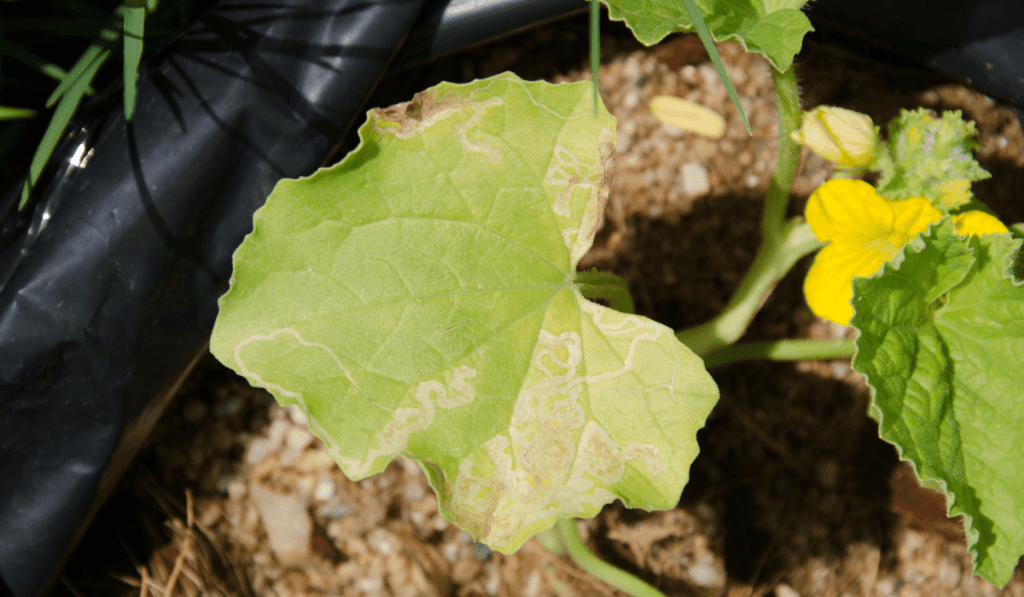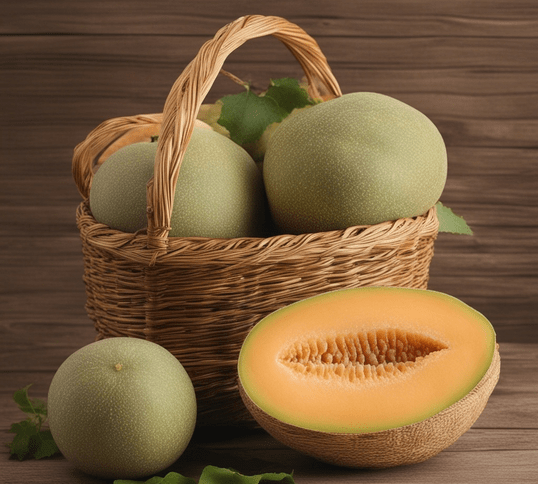Cantaloupe trees, known for their sweet and succulent fruits, are susceptible to various diseases that can hinder their growth and reduce fruit quality. To ensure a successful harvest, it’s essential to not only identify these diseases but also take preventive measures and manage them effectively. In this guide, we will delve into the details of ten common diseases of cantaloupe trees, including their identification, prevention, and management strategies.
1. Powdery Mildew
- Identification: Powdery mildew presents as a white, powdery substance on the leaves and stems. It often starts as small spots and can cover the plant over time.
- Prevention: Ensure proper spacing between plants for good air circulation, reduce humidity in the growing area, and choose resistant cantaloupe varieties.
- Management: Apply fungicides containing sulfur or neem oil, remove and dispose of infected plant parts, and avoid overhead watering.
2. Downy Mildew
- Identification: Downy mildew causes yellow lesions on the upper side of leaves and grayish growth on the undersides. It can lead to wilting.
- Prevention: Provide adequate spacing between plants, use drip irrigation to keep foliage dry, and practice crop rotation.
- Management: Apply copper-based fungicides, remove infected leaves, and maintain proper garden sanitation.
3. Fusarium Wilt
- Identification: Fusarium wilt results in wilting, yellowing, and stunted growth of cantaloupe plants.
- Prevention: Plant disease-resistant varieties, avoid planting in soil with a history of fusarium wilt, and maintain proper soil health.
- Management: Remove and destroy infected plants, practice crop rotation, and ensure proper watering to avoid water stress.
4. Bacterial Blight
- Identification: Bacterial blight causes dark, water-soaked spots on leaves, which may lead to wilting and tissue death.
- Prevention: Use disease-free seeds and transplants, avoid overhead watering, and practice good garden hygiene.
- Management: Remove and destroy infected plants, apply copper-based bactericides, and maintain proper spacing to promote air circulation.
5. Anthracnose
- Identification: Anthracnose leads to sunken, dark lesions on leaves, stems, and fruits.
- Prevention: Ensure proper spacing and ventilation, avoid overhead irrigation, and use disease-resistant varieties.
- Management: Remove and dispose of infected plant parts, apply copper-based fungicides, and practice crop rotation.
6. Alternaria Leaf Spot
- Identification: Alternaria leaf spot appears as small, circular, dark spots on cantaloupe leaves.
- Prevention: Maintain good air circulation, reduce humidity levels, and use drip irrigation.
- Management: Remove affected leaves, apply appropriate fungicides, and ensure proper spacing.
7. Root Rot
- Identification: Root rot results in rotting and darkening of the roots, leading to wilting and stunted growth.
- Prevention: Improve soil drainage, avoid overwatering, and use disease-free planting material.
- Management: There are no effective chemical treatments for root rot. Focus on preventive measures like proper watering practices and soil improvement.
8. Angular Leaf Spot
- Identification: Angular leaf spot causes water-soaked lesions with angular shapes on leaves.
- Prevention: Maintain good garden hygiene, avoid overhead watering, and use disease-free seeds.
- Management: Apply copper-based fungicides, remove infected leaves, and practice crop rotation.
9. Cucumber Mosaic Virus
- Identification: This virus causes mosaic-like mottling and distortion of cantaloupe leaves.
- Prevention: Control aphids, which transmit the virus, and remove weeds that can host the virus.
- Management: There is no cure for viral infections. Remove infected plants promptly to prevent further spread.
10. Botrytis Fruit Rot
- Identification: Botrytis fruit rot results in grayish, fuzzy mold on cantaloupe fruits.
- Prevention: Promote proper air circulation around plants, avoid overhead watering, and harvest fruits before they become overripe.
- Management: Remove infected fruits immediately, improve ventilation, and apply fungicides if necessary.
Conclusion
Effective identification, prevention, and management of common diseases are crucial for a successful cantaloupe harvest. By implementing these strategies and maintaining good gardening practices, you can minimize the impact of these diseases and enjoy healthy and delicious cantaloupes from your garden.



